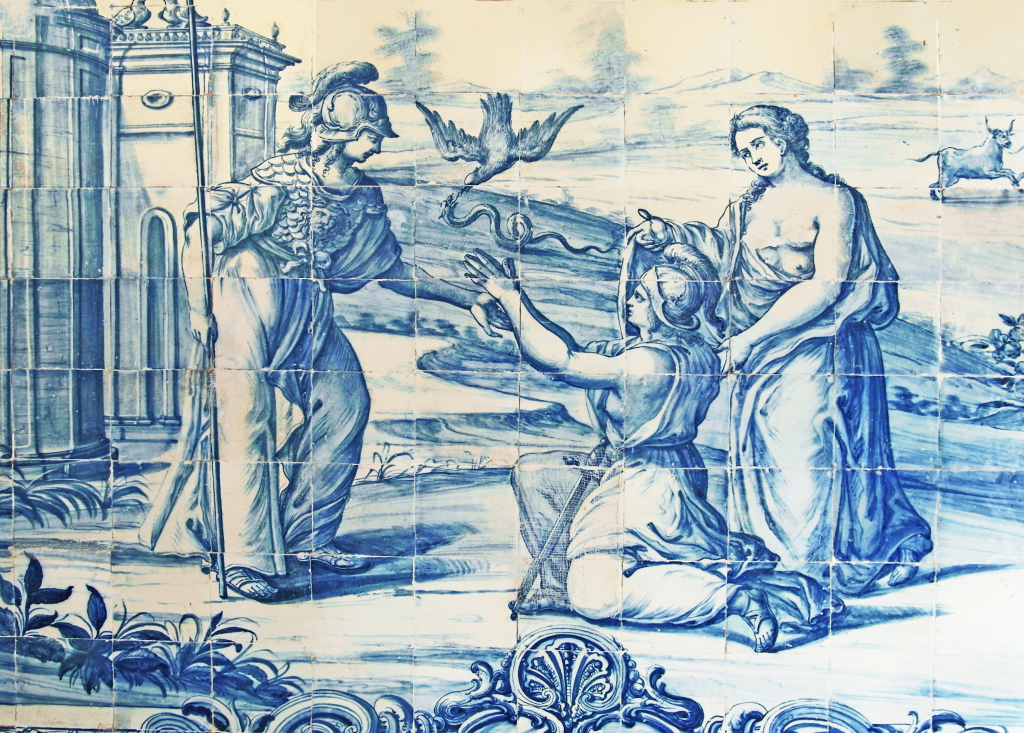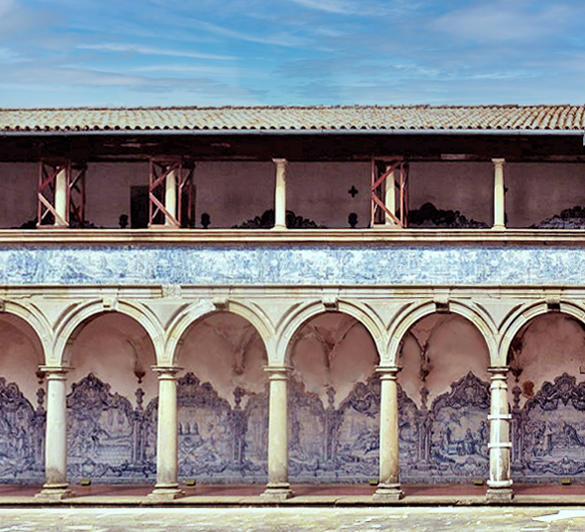Beginning in 1738, the tiles of the Saint Francis Convent Cloister were part of an order in several steps, as identified by the mark of the master tiler Bartolomeu Antunes in the main chapel. Representing the five senses, the four elements, and the four continents, these tiles are one of the most important eighteenth-century ensembles in Brazil.
From what is currently known about the master tiler, responsible for hiring several tile painters, the emblems were painted by the careful hand of his son-in-law, the painter Nicolau de Freitas, around 1746.
With their combination of words and images, the emblems were a type of composition particularly valued to fulfill the pedagogical goals of philosophers, scholars, and theologians.

The quality of the illustration reached a higher refinement when the painters led the organization of the collection of emblems, and the work Quinti Horatii Flacci Emblemata, first published in 1607, is one of the most notable of the period. As proof of his humanist culture, it was the pictor doctus Otto van Veen who was the main responsible for the selection of the verses of the Roman poet Horace.
The stoic moral background was the key reason for the choice of the emblems to be represented on the cloister’s tiles of the Convent of Bahia, and the Van Veen’s work, in the Brazilian convent library, naturally served as a form of communication between the two sides of the Atlantic, allowing those responsible for the monastic order in Lisbon to supervise the making of tiles in the city’s potteries.
In addition to the quality of the images, the tiles ensemble draw attention to the use of poetic themes in religious architecture.
As the historian Pedro Maia observed, the lower cloisters are a semi-public space, “a joyful and glaring prospect for those who come from outside and enter through the gatehouse,” and it is very likely that the purpose of offering a fruitful and educational reception for these visitors, not necessarily religious, was the decisive reason for choosing classic poetic references over religious episodes.
ESSENTIAL BIBLIOGRAPHY
VEEN, Otto van. Theatro Moral de la Vida Humana en cien emblemas, con el enchiridion de Epicteto y la tabla de Cebes, philosofo platónico. Amberes: Viuda de Henrico Verdussen, 1733.
MAIA, Pedro Moacir. Os cinco sentidos, os trabalhos dos meses e as quatro partes do mundo em painéis de azulejos no Convento de São Francisco, em Salvador, Bahia. Brasília: Centro Gráfico do Senado Federal, 1990.


